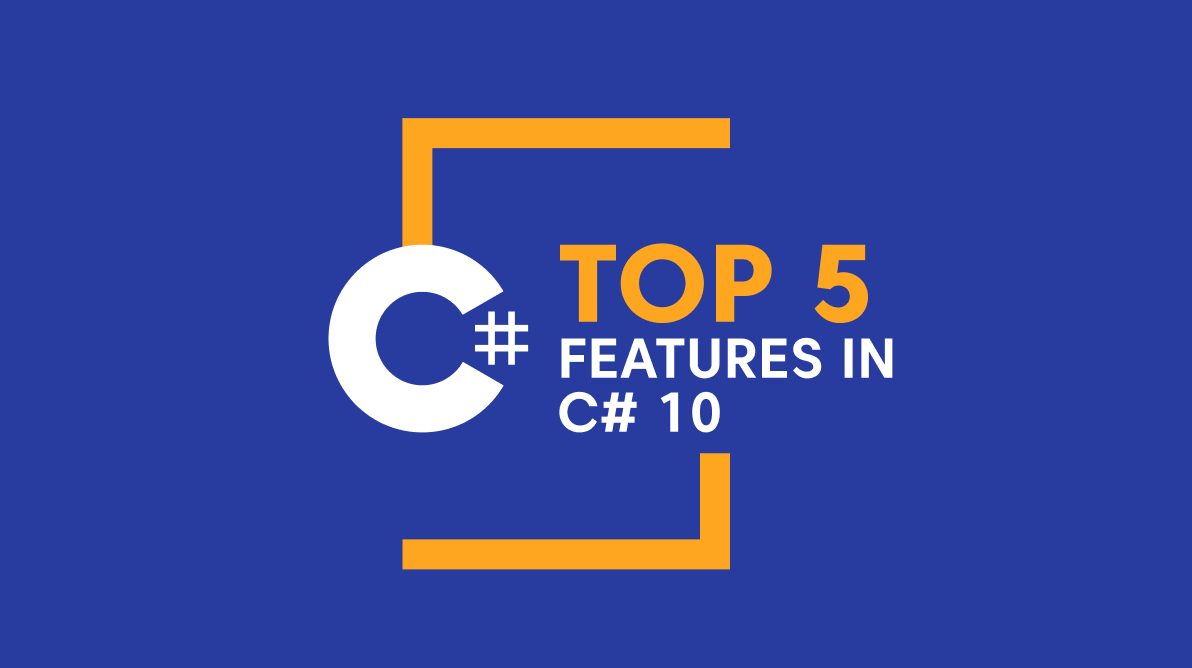TL;DR: Discover the top five features of C# 10, including constant interpolated strings, extended property patterns, and global using directives, that streamline coding and enhance readability. These powerful enhancements are available in .NET 6 and newer versions, making your development process more efficient.
C# is one of the oldest and fast-growing programming languages in the world. This blog lists the top five features in C# 10 that help developers write code faster and prettier:
- Constant interpolated strings.
- Extended property patterns.
- Global using.
- File-scoped namespace.
- Assignment and declaration in the same deconstruction.
Let’s look at each of these features.
Note: With the details provided in the C# language versioning, C# 10 is supported only on .NET 6 and newer versions.
Constant interpolated strings
String interpolation, introduced in C# 6, provides an easy and convenient way to apply syntax to a string. An interpolated string is usually a combination of strings and an expression. On resolving an interpolated string to a string, the expression is executed, and the resultant string value is added in its place.
Back then, string interpolation was restricted only to strings, and a string declared as a constant cannot be interpolated. But now in C# 10, this string interpolation feature is extended to strings declared as constants as well, with the condition that only constant strings can be used in the expression.
Look at the following code example for more clarity.
const string Name = "Alan";
const string Designation = $"{Name} - Employee";
Extended property patterns
Extended property patterns help us to improve the readability of code in accessing a child property from a parent property. In C# versions prior to 10, the child properties were inaccessible at the same level.
C# 8
{ ParentProperty: { ChildProperty: Value } }C# 10
{ ParentProperty.ChildProperty: Value }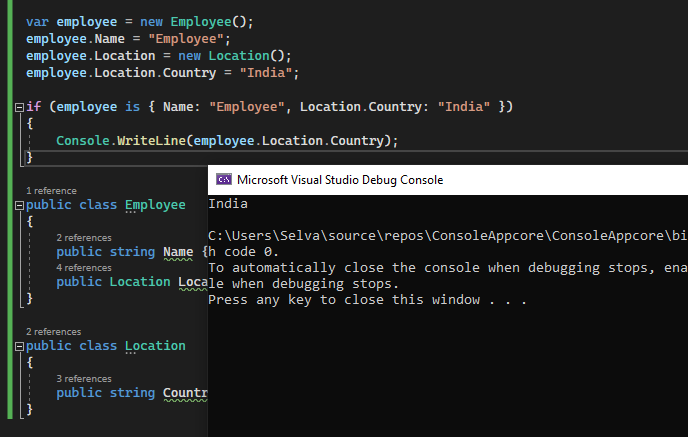
Global using
Use the new global using feature in the C# 10, to avoid referring to the same directive in each class and page. Adding the global modifier as a prefix to the using namespace or directive will apply the reference to all files in the project.
global using System;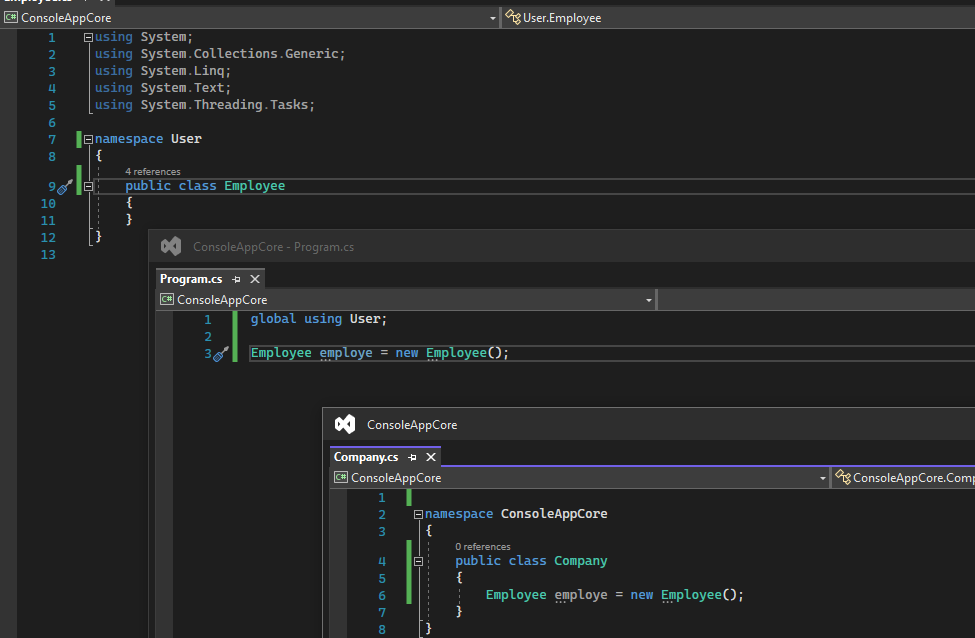
File-scoped namespace
With the new file-scoped namespace declaration in C# 10, you can declare a single namespace for the entire file. After declaring the file-scoped namespace, we can’t declare any other namespace. You can only declare and define the following types:
- Class
- Struct
- Delegate
- Enum
- Interface
Old format
namespace ConsoleAppcore
{
internal class User
{
}
}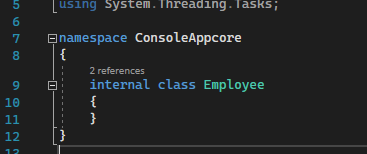
New format for C# 10
namespace ConsoleAppcore;
internal class User
{
}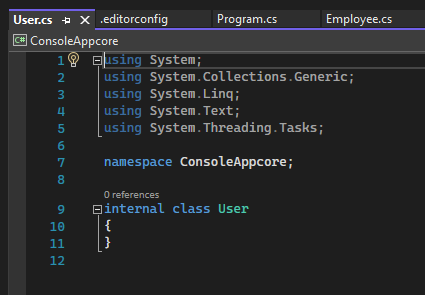
To use this feature in all the new classes to be created, follow these steps in Visual Studio 2022:
- First, right-click the project. Then, choose Add > New EditorConfig.
- Now, open the Editor configuration file.
- Move to the Code Style tab.
- Finally, change Namespace declarations to File Scoped from Block Spaced and save the file.
- Hereafter, creating a new CS file will use the file-scoped format.

Assignment and declaration in the same deconstruction
In the previous versions of C#, developers can either assign values to existing variables or declare new variables in deconstruction. The combination of assigning a value to an existing variable and declaring a new variable was restricted. This restriction is now removed, and you can assign a value and declare a new variable in a single deconstruction.
Before C# 10
(string name, string email) = var employee;
Or
string name;
string email;
(name, email) = employee;In C# 10
string name;
(name, string email) = employee;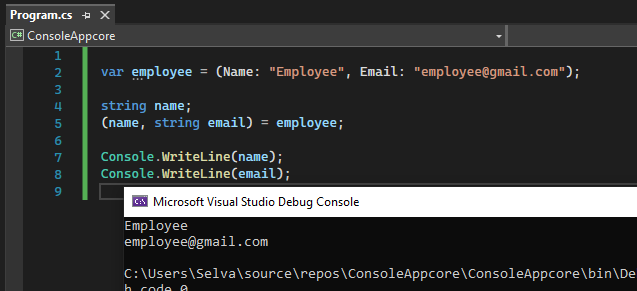
Conclusion
Thank you for reading this blog post. I hope you now have a good idea about the top five features in C# 10. Use these features when coding with C# 10 to make your code more readable and productive.
If you have any questions or comments, you can contact us through our support forums, support tickets, or feedback portal. As always, we are happy to assist you!

